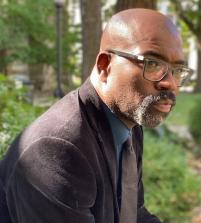
Public Education as Cultural Battleground
Attacks on public schools cannot be extricated today or historically from the use of religion as a unifying source of grievance and a particular vision of the nation fueled by an intense fear about cultural change.
On March 8, 2023, Arkansas Governor Sarah Huckabee Sanders signed into law a sweeping education bill, the LEARNS ACT. While the bill will raise teacher pay and expand school voucher options, among other things, Huckabee Sanders emphasized on her Twitter feed the empowerment of parents and the outlawing of critical race theory and “all forms of racism and leftist indoctrination in our schools.” The bill specifically prohibits public school teachers from providing classroom instruction on sexual reproduction, sexual intercourse, gender identity, sexual orientation, and sexually explicit material before fifth grade. It also empowers the Department of Education “to identify any items that may, purposely or otherwise, promote teaching that would indoctrinate students with ideologies, such as Critical Race Theory, otherwise known as ‘CRT,’ that conflict with the principle of equal protection under the law.”
Arkansas now joins Georgia, Mississippi, Florida, and other states that regulate how teachers can discuss race, gender, sexuality, and systemic inequality in public school settings. The current divisions over parents’ rights and public schools is a recent form of a much older debate about public education in the US. Comparing present legislation with these older debates can help us understand the use of buzzwords to stigmatize educational programs, the importance of public schools as cultural battlegrounds, and the sometimes-explicit, sometimes-implicit role of religion in public education bills.
One hundred years ago, Oklahoma became the first state to successfully pass an anti-evolution bill. By 1929, fifty-three evolution bills or resolutions had been passed. The Scopes Trial in Dayton, Tennessee was the most notable court case to challenge these bills. Kentucky’s House of Representatives had proposed as early as 1922 a bill that was narrowly defeated, but it served as a template for other states. The bill was an “act to prohibit the teaching in public schools and other public institutions of learning, Darwinism, atheism, agnosticism or evolution as it pertains to the origin of man.” Public schools, high schools, training schools, colleges, and universities were all targeted by this extraordinarily broad law, which carried fines up to $50,000 and a county jail sentence from ten days to a year. Many of these “evolution” bills attempted to prohibit a broad array of philosophies and ideologies that conflicted with a Protestant fundamentalist vision of the world. Some also included religious education and the reading of the Bible in a decidedly Protestant perspective. A concerted and coordinated attack on modern learning had begun. “Evolution” became a catchall term in the way that critical race theory and “wokeism” now signify all that proponents of these recent education bills seek to ban and delegitimize.
Southern states led the way in the anti-evolution campaign of the 1920s. But it was not simply southern states and their political and religious leaders who made the argument that public school children should be protected from alien influence and indoctrination. One of the largest funders of anti-evolution campaigns, George F. Washburn, founder of the Bible Crusaders of America, urged Catholics and Protestants to engage in “a righteous uprising” against what was being taught to their children in the public schools. He charged “conspirators” with attempting to control schools of higher learning and to “assassinate” the very “Faith of Our Fathers” in those institutions founded by them. In addition to Washburn, figures like William Jennings Bryan, William Bell Riley, and John Roach Straton travelled the country to make this a national anti-evolution crusade.
Historians have interpreted the anti-evolution campaign as a revolt against modern learning and science, an assault against historical criticism of the Bible, and a protest against the growth of public schooling—especially the expansion of high schools in the South—as a result of the compulsory education movement. What tied many of these disparate concerns together, however, including the massive resurgence of the Ku Klux Klan, was a Protestant nationalism that called for a protectionist strategy against Jews, African Americans, secular intellectuals, and a growing Catholic population (Washburn’s plea for Catholics and Protestants to join forces was a distinct minority position in the 1920s). The growth of cities and the expansion of an urban, commercial culture frightened many white Protestant Americans. They complained that they no longer recognized their country (as white Christian nationalists say in the present). This white, Protestant majority felt deeply threatened by the demographic and cultural changes shaping the nation. Similarly, there has been much anxiety in our current moment about the browning of America. After the murder of George Floyd, massive interracial protests against police brutality, the removal of Confederate monuments, and the intense scrutiny of aspects of our nation’s past deeply unsettled many Americans. They did not like what this look back implied about the nation’s history. It was for many too much to take, too bleak a view of the US’s past on racial oppression, especially as manifested in debates over the 1619 Project.
Defending parents and protecting children has proven a powerful and effective strategy that has been used since the 1920s. To be sure, many parents are eager to provide their children with a good education and hope to instill moral and/or religious values in them. Yet, the attack on public schools cannot be extricated today or historically from the use of religion as a unifying source of grievance and a particular vision of the nation fueled by an intense fear about cultural change. As Robert Orsi notes, children signal the contingency and vulnerability of religious faith, even as they become useful as political tools. Children represent the future of the faith, thus raising the stakes about the very existence and durability of a particular religious world. Public schools are symbols of the reproduction of the next generation, the embodiment of what the future will hold. Hence the ferocity, fear, and sorrow that accompany debates about public schools. In the Supreme Court decision, Pierce v. Society of Sisters (1925), decided squarely within debates about public schools, the Court stated a principle that is relevant to the current context: “The child is not the mere creature of the State; those who nurture him and direct his destiny have the right, coupled with the high duty, to recognize and prepare him for additional obligations.” Yet, modern Republican governors seem all too eager to use the power of the State to punish enemies and pass laws that enact their particular values. Less confidence seems to be placed in homes, churches, and religious institutions to nurture and direct the destinies of future generations. For the foreseeable future, the public schools have once again become a major arena for intense cultural conflict.
Further Reading:
Adam Laats, Fundamentalism and Education in the Scopes Era: God, Darwin, and the Roots of America’s Culture Wars (Palgrave Macmillan, 2010)
Edward J. Larson, Trial and Error: The American Controversy Over Creation and Evolution, Third Edition (Oxford, 2003)
Image by MChe Lee via Unsplash


